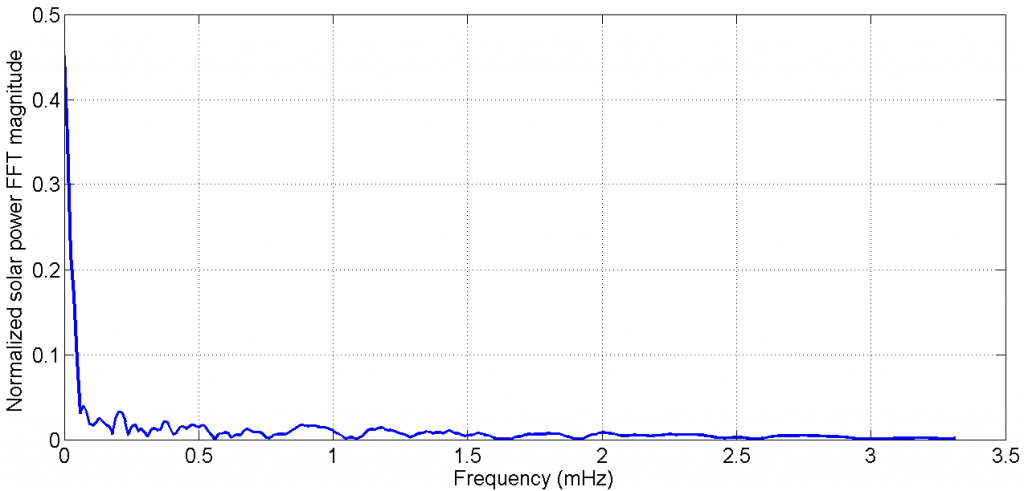Energy Efficient Building HVAC Systems: From Dynamic Frequency Domain Control to Renewable Energy Integration
Yue Cao with adviser P. T. Krein
The statement “energy is not storable” is often heard in professional discussions, even though each person in the audience is sitting in a vast energy storage device—the building. Nearly 40% of annual U.S. energy consumption is attributed to lighting and HVAC (heating, ventilation, and air-conditioning) systems in residential and commercial buildings. Given renewable energy resources including solar, traditional HVAC control based solely on temperature sensing is no longer the best choice. Thus, an advanced controlled motor-driven HVAC system is being researched and designed. Five kHz of solar panel data sampled daily for a year yielded an energy profile that assists an intelligent drive system to make air-circulating decisions. A frequency domain analysis, based on data from normalized solar-panel power during 24 hours for a typical summer day, is shown in Fig. 14.
Frequencies lower than 1 mHz (~16 min) can be regulated by grid connections while those higher than 1 mHz (1 min to 10 min range) could be regulated by the building’s thermal storage through HVAC systems, as human bodies are less likely to realize an internal environmental change for these time ranges. Because longer time ranges (>10 min) are regulated by the grid, the solar data in those times can be low-pass filtered, leaving only the time ranges of interest for the HVAC system. Figure 15 shows the differences for normalized solar panel power between the original full spectrum values and the filtered values (red: 1-second cut-off filter, blue: 5-minute cut-off filter).

Figure 15: Differences for normalized solar panel power between original full spectrum and filtered values
Note that data around the 5-minute update speed are useful for thermal storage regulation, whereas those around the 1-second update speed are mostly close to the original waveform, so little regulation is required. The resulting HVAC system regulates the building energy more efficiently by supplying and constraining energy flow based on available solar energy sources.
This research is supported by the Grainger Center for Electric Machinery and Electromechanics.
